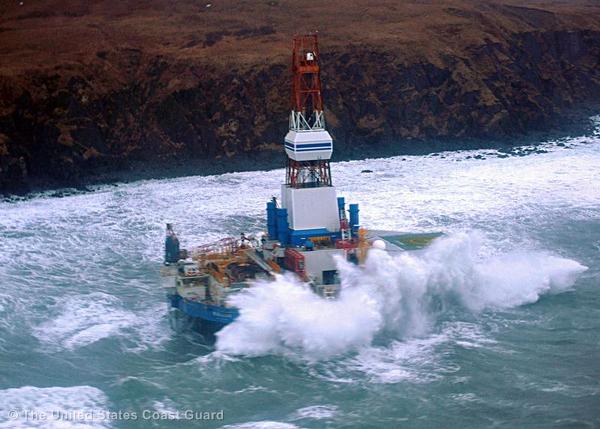This past week the National Petroleum Council released a long report on oil and gas exploration in the Arctic. To the great surprise of no one at all, they found that drilling for oil in the Arctic is a great idea and that, all evidence to the contrary, they have the technology and the expertise to drill safely.
The National Petroleum Council is an official advisory committee to the U.S. Department of Energy. The council is packed with oil industry insiders with only minimal membership coming from NGOs. The report was chaired by ExxonMobil CEO Rex Tillerson and the study group authors include a full roster of Shell Oil employees. Shell just cleared one major hurdle on its way to drilling in the Chukchi Sea north of Alaska this summer, so this report comes at an opportune moment for them.
It is pretty tough to write an entire report about the Arctic without talking about climate change, but this report comes close. In the 86 page summary document, climate change is not directly discussed at all. Even the one mention of significant loss of sea ice in the Arctic pins the blame on decadal-scale fluctuations (p. 21) rather than the accumulation of greenhouse gases in the atmosphere caused in part by the burning of the oil and gas sold by these very same companies. Although climate change does get mentioned in later chapters, it takes a lot of chutzpah to gloss over this essential contradiction.
The truth is that the planet cant afford to burn Arctic oil. The IPCC has recognized that we are on a strict carbon diet, and a recent study published in the journal Nature found that 100% of Arctic oil and gas resources must remain in the ground if we are to have a chance at limiting global warming to 2 degrees Celsius. Yet with this new report, the Council is engaging in climate denial 2.0. Rather than a straightforward assault on the science of anthropogenic climate change (which can backfire, as in the recent case of Willie Soon), the fossil fuel industry now speaks instead of the growing worldwide demand for oil and how we need to work together to meet this insatiable appetite for energy. The trick is to make their polluting products seem inevitable, when really clean energy alternatives abound.
The report admits that the risk of a spill can never be completely eliminated (p. 39) and even under the best of conditions, one can never expect to recover or eliminate all of the oil spilled (p. 8-5). Recent research has indicated that the outlook for oil spill response is even worse than they say, and that Arctic conditions would render most response tactics infeasible for much of the year.
Despite these clear dangers, the report actually makes a big push to weaken the already inadequate regulations governing offshore drilling. Greenpeace urges a complete ban of offshore drilling in waters with hazardous ice (as does Norway), but recent U.S. regulations currently impose two important restrictions on Arctic drilling that the report seeks to eliminate. The same-season relief well (SSRW) rule requires that the company have a backup rig in the area in order to be able to complete a relief well during the same drilling season. This rule tries to ensure that a well blowout would not continue gushing under the ice until the following spring melt, but the report argues that better results can be obtained using newer technologies (p. 47-48).
Similarly, the government also currently imposes a halt to drilling 38 days before the average date of freeze-up. This is simple common sense, because the risks of drilling and the difficulty of oil spill clean-up all increase as the Arctic winter sets in. But incredibly, the report advocates for extending the drilling window into the winter months using icebreakers to keep the drill site clear (see Figure ES-17).
Eliminating these two safeguards would increase profit margins for oil companies, but would also increase risks to the livelihood of local Iupiat communities and to the Arctic marine ecosystem. Both of these changes illustrate the pressure to cut costs when working in an expensive environment such as the Arctic. But, as Shell discovered during its disastrous 2012 attempt at drilling, the Arctic is not a region of the world that tolerates cutting corners.



